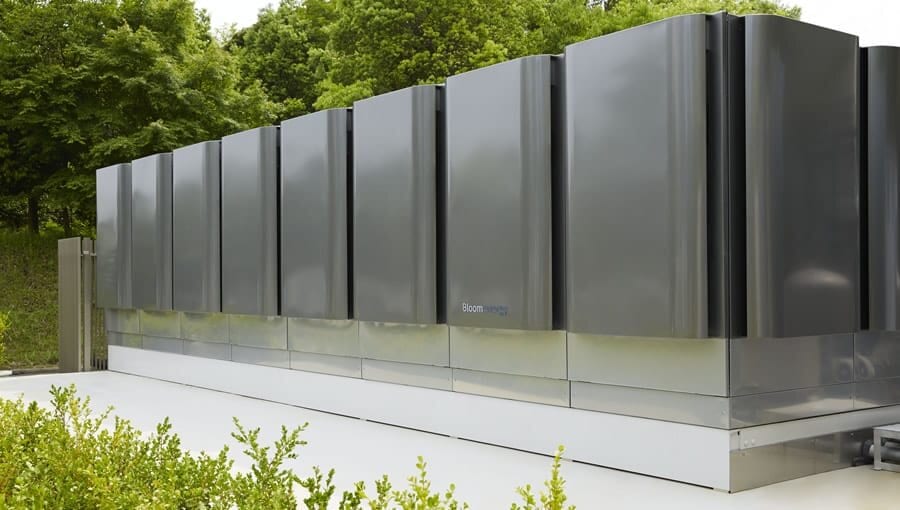There are a growing number of opportunities in the business world that incentivise CEOs to champion the renewables sector. Industry leaders looking for the right investment into this vitally important, rapidly emerging field needn’t look too far. The technology is already established, and these opportunities align with the renewable energy solutions of the future.
It’s a philosophy and movement in which I’m particularly invested. Our company, ResetData, is dedicated to developing an array of environmentally-sound data centres. Our use of solid oxide fuel cells to power these data centres has multiple benefits, including reduced emissions and the capacity to save billions of litres of water every year. This is the central focus of and motivation behind our business: taking action when it’s clear that key figures in government are not doing anywhere near enough.
I see a leading example of a similar push towards cleaner energy in Andrew ‘Twiggy’ Forrest, the mining billionaire and founder of Fortescue Future Industries (FFI). He has announced that FFI will build the world’s largest green energy hydrogen manufacturing facility in central Queensland. This comes on the heels of statements he made earlier this year affirming it was estimated the green hydrogen market could generate revenues of US$12 trillion by 2050.
This facility represents a $1 billion-plus investment on FFI’s part. Once completed, it will have a green hydrogen manufacturing capacity estimated to be the biggest of its kind in the world, bringing thousands of jobs to Queensland’s energy industry.
Green energy infrastructure and equipment — such as electrolysers, cabling and wind turbines — will be manufactured to create green hydrogen that Australia would then export around the world. The facility also looks to double the world’s green hydrogen production capacity, producing two gigawatts of hydrogen electrolysers each year.
“This is the future,” Forrest said, citing hydrogen’s capabilities.
He’s right about that.
These FFI initiatives serve not only as a leading example and benchmark for tackling the climate crisis and Australia’s ongoing dependence on coal and other non-renewables, but also stand as a great example of an individual from the private sector – someone, granted, with immeasurable wealth and resources at his disposal – who is willing to step up while the nation’s leaders get bogged down in partisan rhetoric and ideological entrenchment.
The federal government has yet to set a target of net-zero emissions by 2050, with intra-coalition bickering suggesting a suitable or workable compromise isn’t likely to be in the cards for a while still.
Fuel cells convert their stored chemical energy into electric and thermal energy (heat), without the need for combustion. Concurrently, engines and power plants convert energy from one form to another, but, in doing so, rely on combustion, reducing the energy conversion’s overall efficiency.
Solid oxide fuel cells produce electricity, water, heat and smaller amounts of carbon dioxide using natural gas as the fuel. They can also use biogas, solar or wind turbines to catalyze the electrolysis process, which then results in zero emissions. Their high level of efficiency delivers both environmental and financial benefits and, given that they can be colcated, inefficiencies associated with distribution losses from large central power plants are eliminated. If we shift our focus from combustion engines (which create so much damaging carbon output) to fuel cells (which do not), our energy production would be much more environmentally friendly.
Earlier this month, FFI announced targets to cut the company’s ore shipping emissions intensity levels by 50% by 2030. This will involve accelerating plans to convert ships, including the company’s fleet of ore carriers, to be fueled by green ammonia and support the adoption of ammonia for new vessel construction.
The technology exists; it’s already available for use and provides not only the environmental benefits the planet so desperately needs, but is a financially viable solution as well – rendering moot every counterpoint being made against renewables and alternatives to established resources.
Forrest’s hydrogen endeavours in Queensland represent the first stage of a ‘billion-dollar-plus’ operation. This proposed facility is a “breakthrough” for Australia’s green energy market, Forrest says, and one that signals the start of an industrial revolution.
“We will not allow the world to keep on cooking — we will not allow our children to inherit a much-less stable environment,” Forrest continues. “I’m convinced we have thousands of times more energy available than we’ll ever need.”
These electrolysers are expected to be ready for export by 2023, with the expectation of his company becoming carbon neutral by 2030.
Both of Forrest’s announcements come as Australia faces increasing pressure to take stronger action on climate change, following the recent COP26 conference.
Forrest says, “The world absolutely can — and, therefore, must — move on from a polluting future.”
Now is the time to take action; and if it takes leading figures from the resources sector to do it, and for no other reason than setting a good example for others to follow, then none of us can criticize. We need leadership like this. It’s just a shame that this is not coming, by and large, from the country’s elected leaders.
In the postapocalyptic novel Those Who Remain, the author G. Michael Hopf wrote, “Hard times create strong men, strong men create good times, good times create weak men, and weak men create hard times.” We’re living in the difficult part of that cycle, but we are seeing signs of strong men doing the heavy lifting to make the good times once more a reality. Hopefully, the insights we’ve gained will stick this time.
